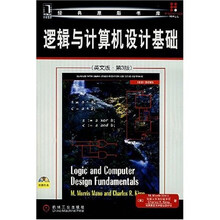Chapter 1 DIGITAL COMPUTERS AND INFORMATION
1-1 Digital Computers
Information Representation
Computer Structure
More on the Generic Computer
1-2 Number Systems
Binary Numbers
Octal and Hexadecimal Numbers
Number Ranges
1-3 Arithmetic Operations
Conversion from Decimal to Other Bases
1-4 Decimal Codes
BCD Addition
Parity Bit
1-5 Gray Codes
1-6 Alphanumeric Codes
ASCII Character Code
1-7 Chapter Summary
References
Problems
Chapter 2 COMBINATIONAL LOGIC CIRCUITS
2-1 Binary Logic and Gates
Binary Logic
Logic Gates
2-2 Boolean Algebra
Basic Identities of Boolean Algebra
Algebraic Manipulation
Complement of a Function
2-3 Standard Forms
Minterms and Maxterms
Sum of Products
Product of Sums
2-4 Two-Level Circuit Optimization
Cost Criteria
Two-Variable Map
Three-Variable Map
Four-Variable Map
2-5 Map Manipulation
Essential Prime Implicants
Nonessential Prime Implicants
Product-of-Sums Optimization
Dont-Care Conditions
2-6 Multiple-Level Circuit Optimization
2-7 Other Gate Types
2-8 Exclusive-OR Operator and Gates
Odd Function
2-9 High-Impedance Outputs
2-10 Chapter Summary
References
Problems
Chapter 3 COMBINATIONAL LOGIC DESIGN
3-1 Design Concepts and Automation
Design Hierarchy
Top-Down Design
Computer-Aided Design
Hardware Description Languages
Logic Synthesis
3-2 The Design Space
Gate Properties
Levels of Integration
Circuit Technologies
Technology Parameters
Positive and Negative Logic
Design Trade-Offs
3-3 Design Procedure
3-4 Technology Mapping
Cell Specification Preface
……
Chapter 4 Arithmetic Functions and HDLs
Chapter 5 Sequential Circuits
Chapter 6 Selected Design Topics
Chapter 7 Registers and Register Transfers
Chapter 8 Memory Basics
Chapter 9 Computer Design Basics
Chapter 10 Instruction Set Architecture
Chapter 11 RISC and CISC Processors
Chapter 12 Input-Output and Communication
Chapter 13 Memory Systems

 缺书网
缺书网 扫码进群
扫码进群





